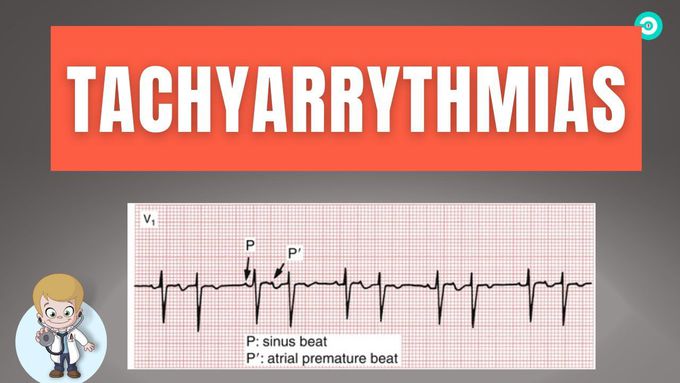


How to dignose Abnormal heart rhythm (Tachyarrythmias) On ECG : Step by step
Welcome to @ecgkid. "Welcome to our channel! In this video, we'll take you through a step-by-step approach to diagnose Tachyarrhythmias using an ECG (Electrocardiogram). Tachyarrhythmias are fast, abnormal heart rhythms that require careful evaluation for accurate diagnosis and appropriate management. #emergencymedicine #tachyarrythmias #ecg _____________________________________________________________________ Timestamp 0:00 Intro 0:21 What Is tachyarrythmia? 0:41 Types of Tachyarrythmias? 1:02 Step 1 | Analyze the heart rate 1:26 Step 2 | Analyze the Rhythm 1:47 Step 3 | QRS complex width 2:13 Step 4 | P wave morphology 2:40 Step 5 | PR interval and PR ratio 3:04 Step 6 | Palpitation onset 3:22 Step 7 | Ectopic Beats 3:52 Conclusion ____________________________________________________________________ 🔍 Topics Covered: Understanding Tachyarrhythmias: We'll begin by explaining what Tachyarrhythmias are, and why it's crucial to diagnose and treat them. ECG Basics: We'll give you a quick refresher on the basics of interpreting an ECG, ensuring you're well-prepared to dive into the details. Review of the ECG Paper: We'll discuss the layout of the ECG paper, understanding the intervals, and what each wave represents. Assessment of Heart Rate: The heart rate is a critical factor in identifying tachyarrhythmias. We'll show you how to calculate it accurately from the ECG. Identification of P-Waves: We'll teach you how to spot P-waves and what their presence or absence can indicate. Measuring PR Intervals: You'll learn how to measure PR intervals, which can reveal important information about the heart's conduction system. Assessing QRS Complexes: Understanding the QRS complex is vital for distinguishing between different types of tachyarrhythmias. Determining the Rhythm: We'll walk you through the process of determining if the rhythm is regular or irregular, a key step in diagnosing tachyarrhythmias. Diagnosing Specific Tachyarrhythmias: We'll cover common tachyarrhythmias like atrial fibrillation, supraventricular tachycardia, ventricular tachycardia, and more, explaining how to identify them on an ECG. Clinical Correlation: We'll stress the importance of correlating the ECG findings with the patient's clinical presentation for accurate diagnosis. Treatment Implications: Understanding the specific tachyarrhythmia will guide appropriate treatment decisions, so we'll discuss the treatment implications of your diagnosis. Case Studies: We'll conclude with real-life case studies to put your knowledge into practice. By the end of this video, you'll have the skills and confidence to diagnose tachyarrhythmias accurately and make informed decisions about patient care. If you find this video informative, please hit the like button, share it with your friends, and subscribe for more medical insights. Stay curious and stay tuned for more fascinating content from the world of healthcare. Thanks for watching!" About Our Channel Our channel is about medical educational videos and online medical courses. We cover lots of cool stuff, such as emergency medicine, ECG, cardiology, and clinical medicine, as well as various other disorders and disorders of anatomy and physiology, along with cardiology and medicine (fields of study). Check out our channel here: @ecgkid Don’t forget to subscribe! FIND US AT https://www.ecgkid.com/ FOLLOW US ON SOCIAL Get updates or reach out to get updates on our social media profiles! Twitter: https://twitter.com/ecgkid Facebook: https://facebook.com/ecgkid Instagram: https://twitter.com/ecgkid Spotify: http://spotify.com/ecgkid
Best Anabolic Steroids Natural Muscle Boosters: A 2025 ReviewElectrocardiogram (ECG) - Normal sinus rhythm (NSR): Clinical Nursing CarePediatric ECGECG Rhythms

